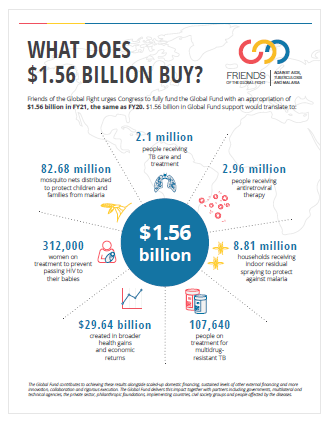January 27, 2020
Click here to download a PDF copy of the U.S. Investment Case for the Global Fund.
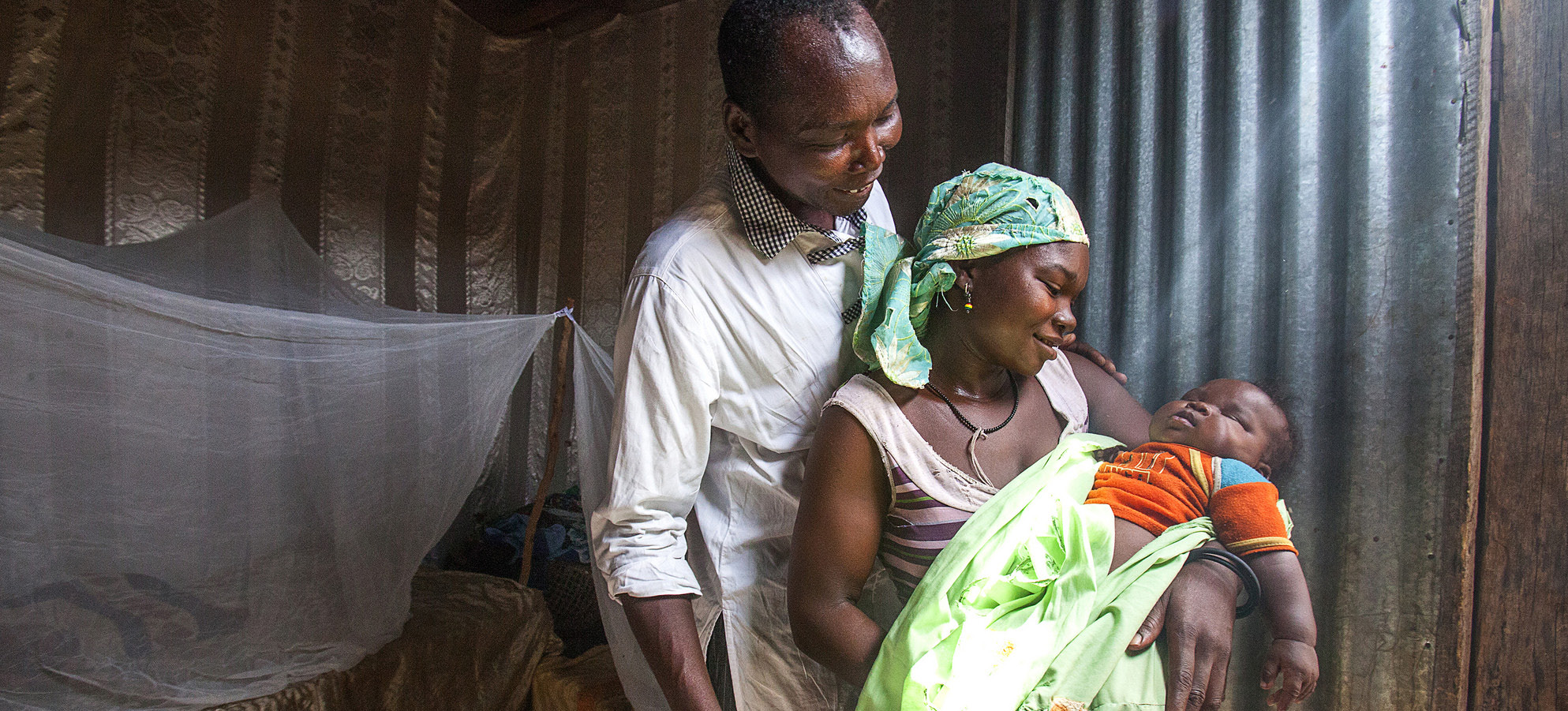
The Global Fund to Fight
AIDS, Tuberculosis and Malaria:
A Smart, Lifesaving U.S. Investment
The Global Fund to Fight AIDS, Tuberculosis and Malaria is the world’s largest global health funder, investing more than $4 billion a year in programs run by local experts and governments to accelerate the end of the world’s deadliest infectious diseases.1
Since the Global Fund was founded in 2002:

OVER 32 MILLION LIVES SAVED
*in countries where the Global Fund invests 2
Benefits to the U.S.
U.S. investments in the Global Fund and all other global health programs are less than one quarter of one percent of the total federal budget, and they provide significant health security and economic benefits.3, 4, 5
Helps Prevent Emerging Pandemics from Reaching U.S. Shores
In order to fight AIDS, TB and malaria effectively, the Global Fund invests in strengthening local health infrastructure, which also helps countries fight and contain other diseases such as Ebola.6
Grows Export Markets
11 of the top 15 U.S. export markets were once U.S. foreign aid recipients, and 11 of the 15 fastest growing economies are located in Africa and Southeast Asia. Malaria-free countries have five times greater economic growth than countries with malaria. 7, 8, 9
Catalyzing Domestic Investments
U.S. investments through the Global Fund also encourage the countries fighting the diseases to increase their own investments in health.

Global Fund co-financing requirements catalyze domestic investments, with grant recipients committing 41 percent more of their own funding to fight AIDS, TB and malaria for 2018–2020 compared to 2015–2017.10
The Global Fund also projects that domestic funding for programs to fight HIV, TB and malaria in 2021–2023 will grow to $46 billion, an increase of 48 percent over the current cycle.11
New Challenges
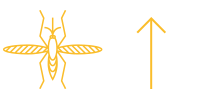
Insecticide Resistance
Mosquitoes are developing resistance to the most common insecticides.12
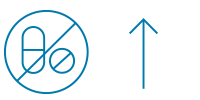
Antibiotic Resistance
2.6 million people could die from drug-resistant TB per year by 2050, costing the global economy an estimated $16.7 trillion.13
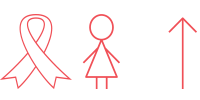
Young Women at Risk
Nearly 1,000 young women and girls are infected with HIV every day. In some of the hardest-hit areas in southern Africa, six times as many young women and girls are infected with HIV as young men and boys.
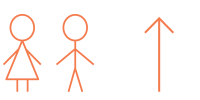
Growing Youth Populations
With Africa’s youth population expected to increase by 40 percent over the next decade, the same funding levels will not be enough to reach a larger population with HIV prevention.14
Leveraging Other Donors
By law, the U.S. can only cover up to 33 percent of the Global Fund’s total budget, requiring other donors to step up. During the last pledging cycle in 2019, other donors significantly increased their contributions. Below is a partial list of donors that significantly increased their pledges to the successful sixth Replenishment.15
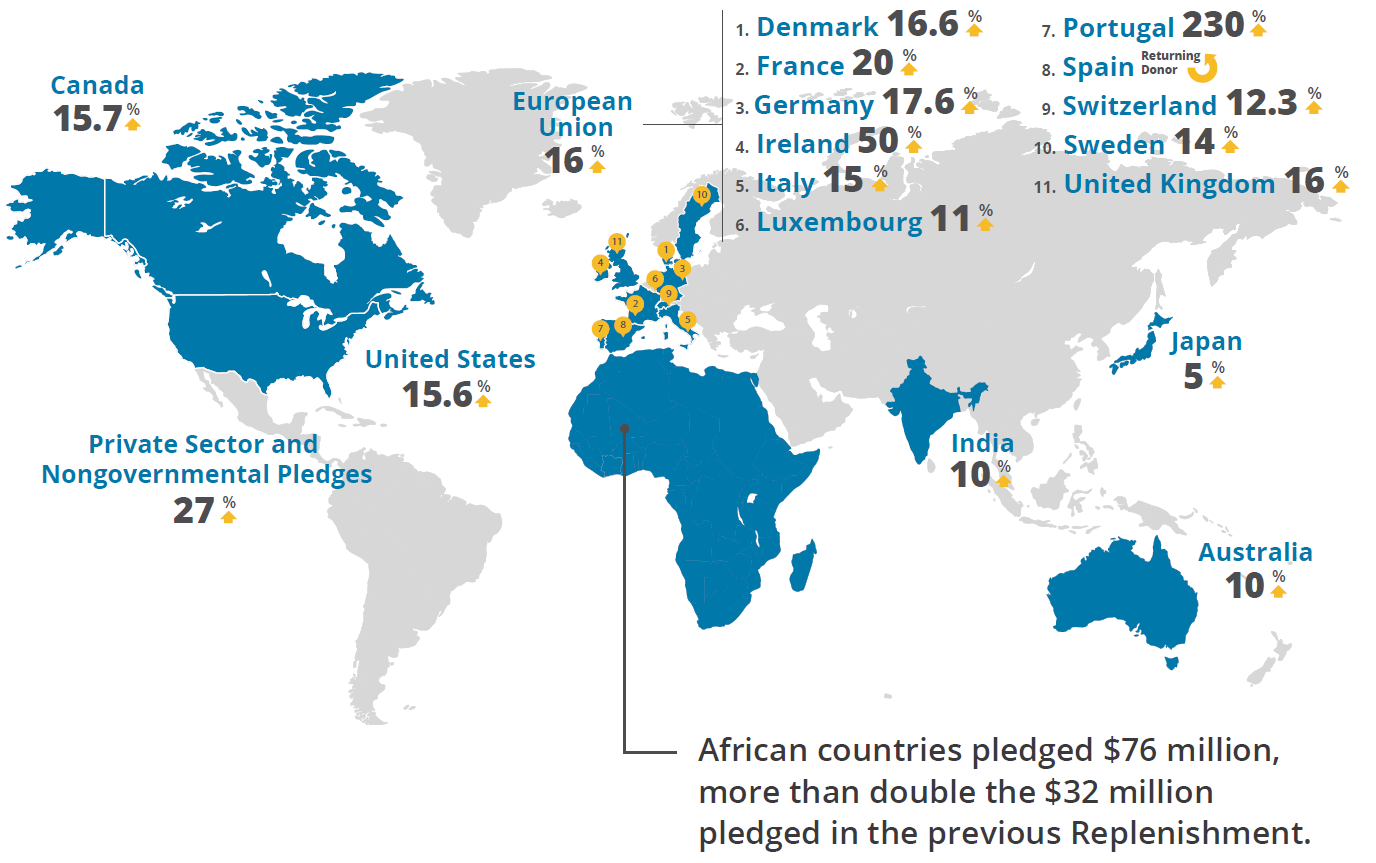
We need continued U.S. leadership to end the AIDS, TB and malaria epidemics.
In 2019, the whole world stepped up, pledging $14 billion for the Global Fund’s hugely successful sixth Replenishment – an unprecedented 15 percent increase over the previous fundraising cycle. U.S. leadership was instrumental, encouraging other donors to increase their contributions and get the world back on track to end AIDS, TB and malaria.
Maintaining a $1.56 billion appropriation for fiscal year 2021 would equal a $4.68 billion U.S. contribution over the three-year Replenishment cycle and ensure that other donors follow through on their commitments.16
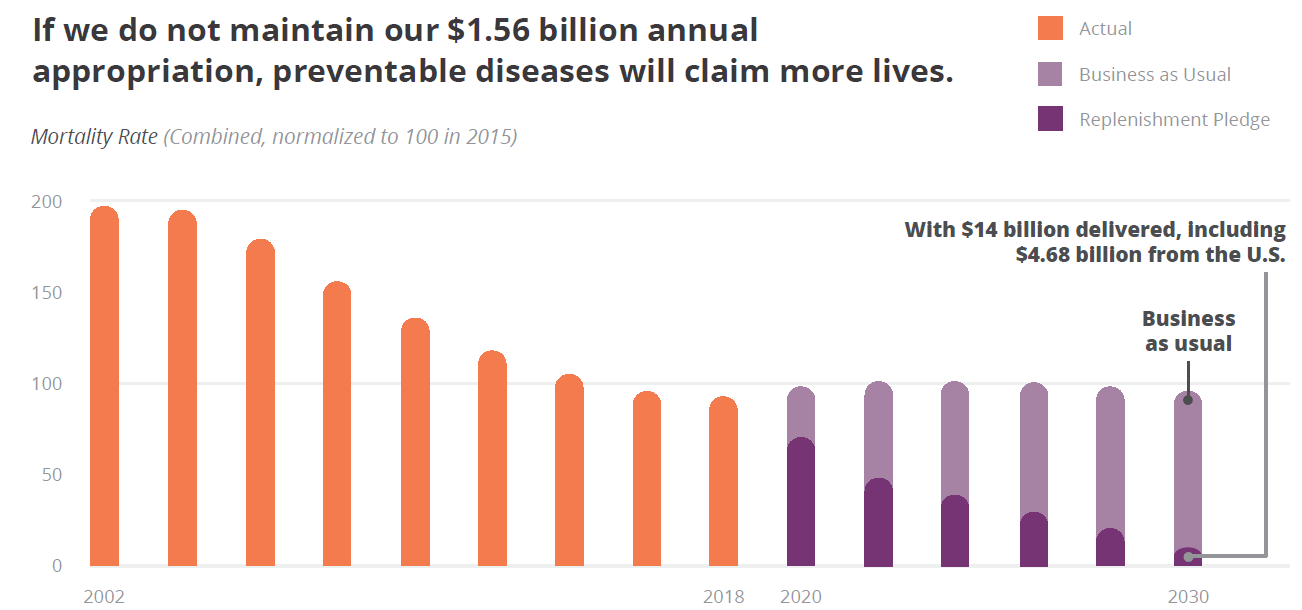
Combined with an expected 48 percent increase in domestic resources, $14 billion for the Global Fund will:

Save an additional 16 million lives.

Reduce the number of projected AIDS, TB and malaria deaths by nearly 50 percent.

Avert 234 million infections or disease cases.

Spur $19 in economic returns and health gains for every $1 invested.17
U.S. support for the Global Fund is part of overall U.S. international assistance appropriations. To adequately fund the Global Fund, we need an increase in the broader international development budget—a critical investment in U.S. humanitarian, economic and security goals with a history of strong bipartisan support.
Sources
- https://www.theglobalfund.org/media/8279/publication_sixthreplenishmentinvestmentcase_report_en.pdf pg. 41
- https://www.theglobalfund.org/media/8752/corporate_2019resultsreport_report_en.pdf pg. 9
- https://www.kff.org/news-summary/global-health-funding-in-the-fy-2020-conference-agreement/ (Global Health Spending)
- https://www.nytimes.com/2019/12/19/us/politics/government-shutdown-bill.html (Discretionary Spending)
- https://www.cbo.gov/system/files?file=2019-01/54918-Outlook-Chapter3.pdf (Mandatory Spending)
- https://www.theglobalfund.org/en/blog/2017-02-20-rebuilding-health-care-in-the-shadow-of-ebola/
- https://www.usaid.gov/reports-and-data/key-accomplishments
- https://www.focus-economics.com/blog/fastest-growing-economies-in-the-world
- https://www.ncbi.nlm.nih.gov/books/NBK2624/
- https://www.theglobalfund.org/media/8279/publication_sixthreplenishmentinvestmentcase_report_en.pdf pg. 14
- https://www.theglobalfund.org/media/8279/publication_sixthreplenishmentinvestmentcase_report_en.pdf pg. 4
- https://www.who.int/malaria/areas/vector_control/insecticide_resistance/en/
- https://docs.wixstatic.com/ugd/309c93_f0731d24f4754cd4a0ac0d6f6e67a526.pdf
- https://www.theglobalfund.org/media/1296/publication_womengirls_focuson_en.pdf?u=637066556670000000 pg. 3
- https://www.theglobalfund.org/media/8882/replenishment_2019sixthreplenishmentconferencepledges_list_en.pdf?u=637067389690000000
- https://www.theglobalfund.org/media/8174/publication_sixthreplenishmentinvestmentcase_summary_en.pdf pg. 8
- https://www.theglobalfund.org/media/8174/publication_sixthreplenishmentinvestmentcase_summary_en.pdf pg. 10

